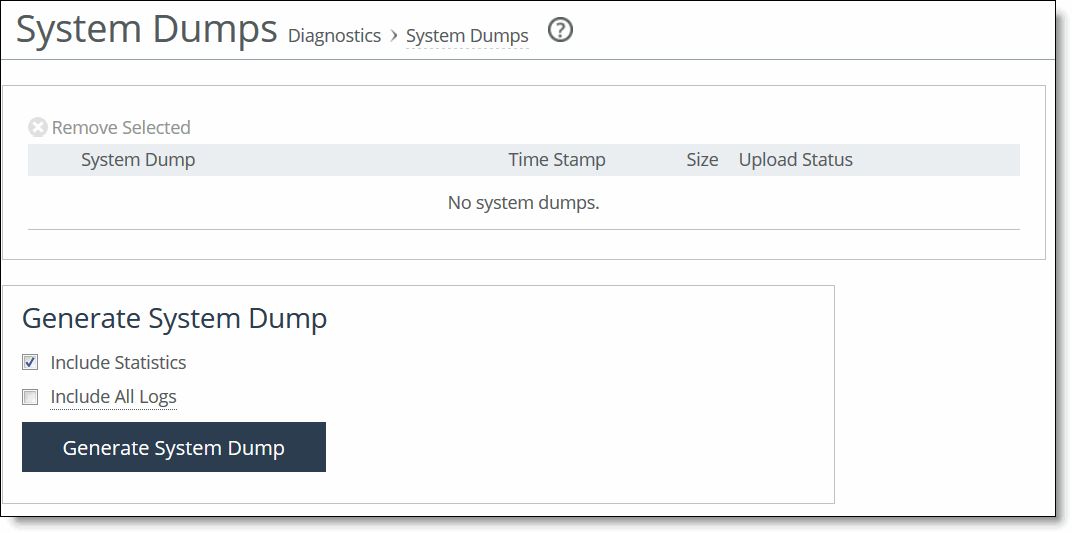Generating System Dump Files
You can generate, display, and download system dump files in the System Dumps page. A system dump file contains a copy of the kernel data on the system. System dump files can help you diagnose problems in the system.
To generate a system dump file
1. Choose Reports > Diagnostics: System Dumps to display the System Dumps page.
Figure: System Dumps Page

2. Under Generate System Dump, select the type of information to include in the report:
• Include Statistics - Select to collect and include CPU, memory, and other statistics in the system dump. This option is enabled by default. These statistics are useful while analyzing traffic patterns to correlate to an issue. The system adds the statistics to a file in the system dump called stats.tgz.
• Include All Logs - Removes the 50 MB limit for compressed log files, to include all logs in the system dump.
3. Click Generate System Dump.
Because generating a system dump can take a while, a spinner appears during the system dump creation. When the system dump is complete, its name appears in the list of links to download.
To view a system dump file
1. Choose Reports > Diagnostics: System Dumps to display the System Dumps page.
2. Click Download to view a previously saved system dump.
3. Select the filename to open a file or save the file to disk.
4. To remove a log, check the box next to the name and click Remove Selected.
5. To print the report, choose File > Print in your web browser to open the Print dialog box.
To upload a system dump file to Riverbed support
1. Choose Reports > Diagnostics: System Dumps to display the System Dumps page.
2. Select the filename.
3. Optionally, specify a case number that corresponds to the system dump. Riverbed Support recommends using a case number; for example, 194170.
You can also enter the CLI command file debug dump upload URL to specify a URL instead of a case number. When you specify a URL, the dump file goes directly to the URL.
If the URL points to a directory on the upload server, it must have a trailing /
For example:
ftp://ftp.riverbed.com/incoming/
(not ftp://ftp.riverbed.com/incoming)
The file name as it exists on the appliance will then match the file name on the upload server.
For details, see the Riverbed Command-Line Interface Reference Manual.
4. Click Upload.
Because uploading a system dump can take a while, the status appears during the upload. When the system dump finishes uploading, the date, time, and a status of either uploaded (appears in green) or failed (appears in red). An explanation appears for uploads that fail.


